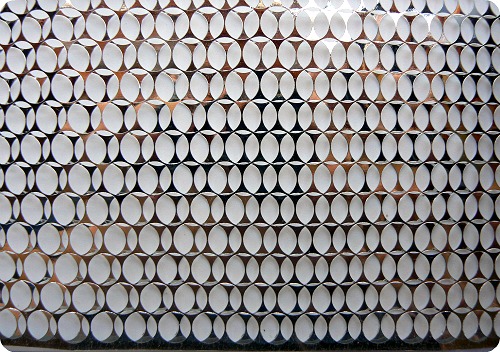 |
| Expensive designer lampshade? No, roll of sequin waste (three layers) in plastic bag. |
I guess I should be working on something neat for the Sequintastic September blog hop or at least finish my bead embroidery, twin bracelet or catch up on TAST. Or do a monthly design challenge piece. But since losing Sötis and Vitfluff, some of the creative energy just seemed to seep out, like a balloon slowly deflating. And without a camera, I have one less creative outlet, the one that I always turned to when too jaded for anything else. Compared to embroidery and seedbeading, photo was and is my place to go to for some instant satisfaction.
I'm not going to moan my way through this post, though. I did get most of that out in Tuesday's post and today I feel better. Tired, but not sad. (And earlier this week I got some fun news in my inbox -- not saying anything yet, but it might be fun news for my blog readers too...) In fact, the idea for this post was to show some pics, hoping they'll inspire me. And perhaps you too?
After signing up for Saturday Sequins' Sequintastic September, I couldn't help myself. I did a little shopping. Inspired by the pics in Hazel Everett's book Goldwork (fab book, if even remotely interested in goldwork embroideyr you should buy it!), I wanted not just sequins, but also sequin waste (aka punchinella). On page 81 (see e.g. the Amazon.com preview), she shows some examples of how to use the waste, creating new patterns by layering the material slightly offset.
Sequin waste, I should perhaps explain, is the perforated plastic strips left after the sequins have been punched out (as seen in the photo above). Amongst crafters it's sometimes better known as punchinella. Round holes are the most common, but sequin waste or punchinella is also available in other designs. A few years back it was popular among scrappers and card makers, but it's also used in e.g. embroidery and as a tool to create textures in friendly plastic (Liz Welch's ooze technique) or as a stencil for stamping and painting. It can pretty much be used in all crafts, one way or another. You can find it in some craft and scrapbooking shops as well as in shops specializing in sequins.
Below are some pics I took of layered sequin waste and the different patterns that emerge when just slightly changing the position of the two layers. As seen in the first photo in this post, you can also add more layers as well as make geps between the layers for dimensional effects.
 |
| First I just saw BMW logos, then the flowers appeared. |
 |
| On the right, I sense a very retro pattern. 60's or something? |
Has anyone else used sequin waste/punchinella? I'd love to see pics. Especially if it's jewellery as I've mostly found emroidery and paper craft creations so far. Surely, someone must use this interesting material in jewellery.




Such a great post. I've heard of Punchinella but couldn't guess it would look like this. And that sequin waste would appear in a goldwork book is a nice surprise. Have to get that book. It seems to have the modern approach to goldwork I'm interested in.
ReplyDeleteThanks! Hazel Everett's book is lovely (and I'm not just saying that because one of the projects in it is a dragon). She uses a lot of coloured goldwork threads, complementing the gold, to add colour and a modern style of goldwork, utilizing the new threads that are available now, as she herself explain. Modern as in not stiflingly traditional and heavy, but not experimentally edgy either. I really like the use of colour, even if I keep seeing beading instead of chipping (if I, a seedbeader, am going to do goldwork, it's going to be beaded).
DeleteFor a complete newbie like me, the book was both inspirational and very informative. As for sequin waste, though, it's just mentioned on that page. Can't remember it being used in the projects or samples shown in the book. It a great book, just don't buy it expecting to see sequin waste goldwork embroideries.
I've got Hazel Everett's book now. It's really inspirational with a modern approach to goldwork. I've got a couple of books on goldwork, but they concentrate on historical styles and could be useful if you are interested in eccelesiastical goldwork. This books makes me feel free to use whatever materials I wish, like seed beads and coloured threads.
DeleteLosing two kittens must be devastating. No wonder if your energies are on a low lever. I understand that you are missing your camera in this situation, not only as an important tool for blogging. Photography is a wonderful creative outlet when feeling mentally exhausted. We are surrounded by motifs, we don't need to create them. Hope you'll be able to buy a camera soon. Hugs!
ReplyDeleteWow, I never heard of this either, but it's very cool.
ReplyDelete